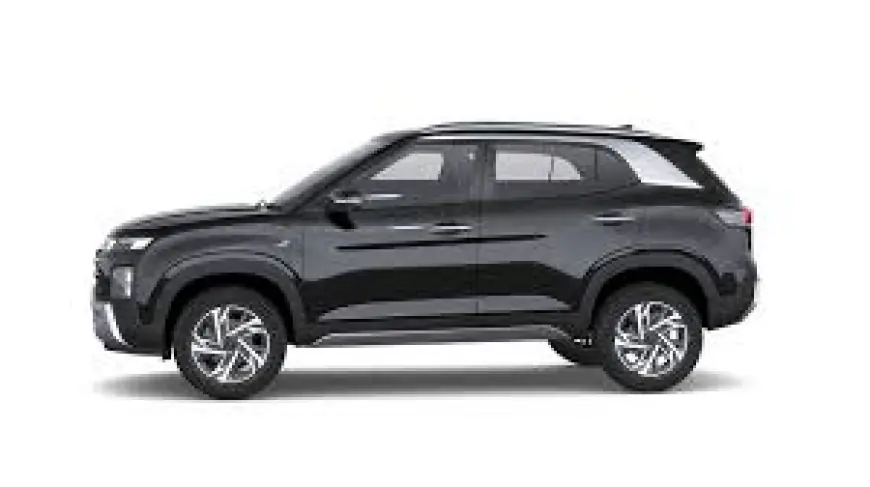India SUV Market 2030F Rising Demand Across Urban & Rural
India's growing middle-class population and increasing disposable incomes have played a pivotal role in driving the demand for SUVs.

Introduction
The Indian automobile industry has always been one of the most dynamic markets in the world, but in recent years, no segment has made a more resounding impact than the Sports Utility Vehicle (SUV) market. According to industry projections, the India SUV market, valued at USD 18.13 billion in 2024, is expected to witness a remarkable CAGR of 10.97%, ultimately reaching USD 33.85 billion by 2030.
This robust growth reflects more than just numbers—it represents a cultural and lifestyle shift in Indian mobility. Once considered a niche product for premium customers, SUVs are now mainstream, resonating with middle-class families, aspirational buyers, urban professionals, and even rural consumers. Their commanding road presence, spacious interiors, enhanced safety, and versatility have made them the preferred choice for both daily commuting and long-distance journeys.
From compact SUVs designed for budget-conscious city drivers to luxury and electric SUVs that symbolize modernity and sustainability, the segment caters to an incredibly diverse audience. This transformation has been fueled by evolving consumer preferences, technological innovations, government incentives, and strong competition among domestic and global automakers.
Emerging Trends in the India SUV Market
1. The Rise of Compact SUVs
One of the most defining trends of the past decade is the rapid rise of compact SUVs, especially sub-4-meter models. These vehicles offer affordability, maneuverability, and feature-rich designs while taking advantage of tax benefits that make them accessible to price-sensitive buyers. Models such as the Maruti Suzuki Brezza, Hyundai Venue, and Tata Nexon dominate this space, appealing to urban drivers who want the SUV experience without the bulk of larger vehicles.
2. Electrification of SUVs
Another trend reshaping the SUV market is the shift toward electrification. With rising environmental awareness and stricter emission norms, electric SUVs (e-SUVs) have emerged as a sustainable alternative. Cars like the Tata Nexon EV and MG ZS EV are gaining traction, supported by government subsidies, reduced GST rates, and expanding charging infrastructure. Electric SUVs are not only eco-friendly but also cost-efficient in terms of running and maintenance.
3. Premium Features in Affordable SUVs
Gone are the days when premium features were exclusive to luxury vehicles. Today, even entry-level compact SUVs are being equipped with advanced infotainment systems, AI-enabled voice assistants, ADAS (Advanced Driver Assistance Systems), connected car technology, and enhanced safety features. This democratization of technology is a key reason behind the soaring demand.
4. Growth Beyond Metro Cities
SUV adoption is no longer limited to Tier-1 urban centers. Tier-2 and Tier-3 cities are driving massive demand, as aspirational buyers in smaller towns seek SUVs that provide a blend of status, utility, and affordability. The demand is particularly high for compact SUVs that can handle both city roads and semi-urban terrains.
5. Focus on Sustainability and Hybrid Models
Alongside pure EVs, hybrid SUVs are being introduced to bridge the gap between traditional ICE (Internal Combustion Engine) models and fully electric variants. These hybrids deliver improved fuel efficiency while lowering emissions, making them an attractive option for eco-conscious buyers not yet ready to fully adopt EVs.
Download Free Sample Report: https://www.techsciresearch.com/sample-report.aspx?cid=13024
Key Market Drivers
1. Changing Consumer Preferences
Indian consumers are increasingly prioritizing comfort, safety, and versatility in their choice of vehicles. The SUV perfectly addresses these needs by offering higher ground clearance, spacious cabins, and robust styling that reflects social status and aspiration.
2. Rising Disposable Income
The growing middle class and rising disposable incomes have expanded the affordability of SUVs. Customers are willing to spend more for vehicles that provide multi-functional utility and enhance their lifestyle quotient.
3. Urbanization and Infrastructure Growth
As road infrastructure improves with expressways, highways, and better city connectivity, consumers are more inclined toward owning vehicles that can handle long-distance travel comfortably. SUVs are seen as the ideal choice for family trips and intercity commuting.
4. Government Policies & Incentives
Government policies aimed at promoting electric mobility and reducing emissions have directly influenced the SUV market. Lower GST rates for EVs, subsidies under FAME II, and stricter BS6 emission norms are pushing automakers to develop greener SUV alternatives.
5. Increasing Competition and Model Launches
The entry of new international players and aggressive strategies by domestic manufacturers have ensured that consumers have a wide range of SUVs at every price point. Frequent launches, customization, and localization strategies keep the market vibrant and competitive.
Industry Key Highlights
- The Indian SUV market was valued at USD 18.13 billion in 2024.
- Expected to grow at a CAGR of 10.97%, reaching USD 33.85 billion by 2030.
- Compact SUVs lead the segment due to their affordability and versatility.
- Electric SUVs are gaining rapid acceptance, supported by government policies.
- Tier-2 and Tier-3 cities are emerging as critical demand centers.
- Automakers are equipping SUVs with premium features across all segments.
- Both domestic leaders (Tata, Mahindra, Maruti) and global players (Hyundai, Kia, Toyota, MG, BMW, Mercedes-Benz) are aggressively competing.
Competitive Analysis
The India SUV market is one of the most competitive automobile segments, with domestic and international brands vying for consumer attention.
- Tata Motors: A pioneer in the electric SUV space, with models like the Tata Nexon EV, while also excelling in compact and mid-size SUVs.
- Mahindra & Mahindra: Known for rugged SUVs like the Scorpio and XUV700, Mahindra has a strong foothold in both rural and urban markets.
- Maruti Suzuki: Leveraging its vast dealership network and after-sales service, Maruti’s Brezza continues to be one of the most popular compact SUVs.
- Hyundai Motor India: With models like Creta and Venue, Hyundai is a market leader in compact and mid-size SUVs, offering stylish designs and feature-packed interiors.
- Kia India: A relatively new entrant, Kia has quickly captured market share with the Seltos and Sonet, known for their modern designs and value-for-money features.
- Toyota Kirloskar Motor: Dominates the premium SUV category with models like Fortuner, appealing to buyers seeking durability and reliability.
- MG Motors: Positioned as a modern, tech-savvy brand, MG’s Hector and ZS EV have resonated well with Indian buyers.
- Luxury Brands: Mercedes-Benz, BMW, and Audi are capturing the high-end SUV market, targeting elite buyers with luxury offerings like GLC, X5, and Q7.
This fierce competition has accelerated innovation, ensuring that consumers benefit from better pricing, advanced features, and diverse model choices.
Future Outlook
The future of the India SUV market looks extremely promising, with several transformational shifts on the horizon:
- Electrification will dominate: By 2030, electric SUVs are expected to account for a significant share of total SUV sales.
- Connected & Smart SUVs: Integration of AI, IoT, and smart features will make SUVs more connected, improving safety and driving experience.
- Hybrid adoption: For consumers not ready to transition fully to EVs, hybrid SUVs will serve as a practical bridge.
- Luxury SUV growth: With rising aspirations and higher incomes, the luxury SUV segment will expand significantly.
- Rural expansion: Compact SUVs tailored to rural needs will continue to penetrate deeper into semi-urban and rural India.
10 Benefits of the Research Report
- Provides comprehensive market size and growth forecasts till 2030.
- Offers in-depth segmentation analysis by type, seating, propulsion, and region.
- Identifies emerging consumer trends reshaping the SUV landscape.
- Highlights market drivers, challenges, and opportunities.
- Delivers competitive insights on key domestic and international players.
- Analyzes the impact of government policies and regulations on market growth.
- Evaluates the future of electric and hybrid SUVs in India.
- Provides regional insights, highlighting high-growth areas.
- Supports businesses in making strategic investment and expansion decisions.
- Offers customization options to suit specific business needs.
Conclusion
The India SUV market is on a transformative journey, fueled by rising incomes, aspirational lifestyles, technological advancements, and the push for sustainable mobility. From compact SUVs that dominate urban streets to luxury and electric models redefining sophistication, the SUV has become the ultimate choice for Indian consumers.
As automakers continue to innovate, the competition intensifies, and consumer expectations evolve, the next decade promises unprecedented growth opportunities. By 2030, the SUV will not just be a vehicle but a symbol of modern Indian mobility—powerful, sustainable, and future-ready.
Contact Us-
Mr. Ken Mathews
708 Third Avenue,
Manhattan, NY,
New York – 10017
Tel: +1-646-360-1656
Email: [email protected]
Website: www.techsciresearch.com
What's Your Reaction?
 Like
0
Like
0
 Dislike
0
Dislike
0
 Love
0
Love
0
 Funny
0
Funny
0
 Angry
0
Angry
0
 Sad
0
Sad
0
 Wow
0
Wow
0

















































